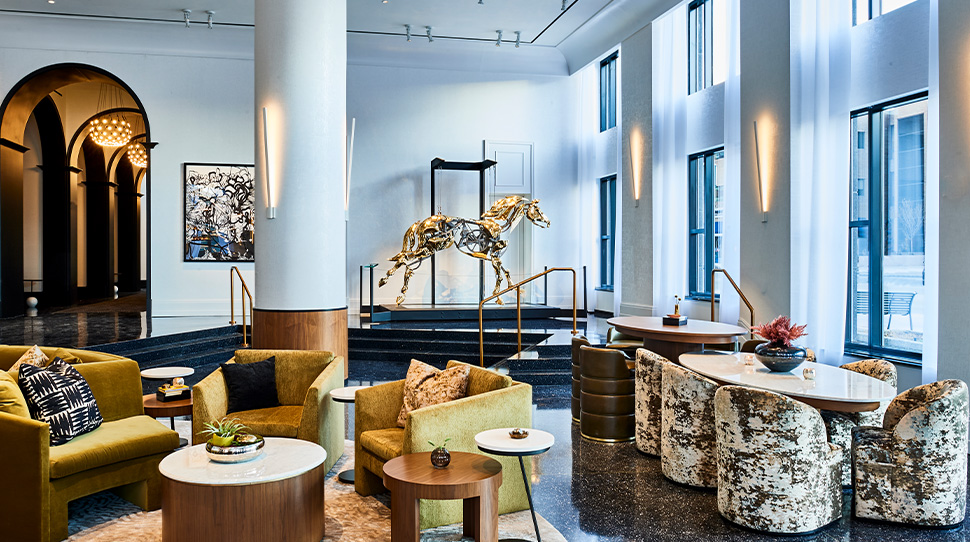

About 20 miles north of Detroit, you’ll discover a vibrant art scene offering everything from Frank Lloyd Wright architecture to bold, whimsical Pop pieces.
Start at Daxton Hotel, a boutique property in the charming walkable downtown area of Birmingham, Michigan, that’s like a museum. The hotel’s black-and-white palette, made from materials like marble and terrazzo, provides a crisp, modern canvas for more than 400 original works by artists from 80 countries. In the lobby, The Mechanical Horse by Adrian Landon (known for the massive Pegasus-like Wings of Glory displayed at 2019’s Burning Man) will steal your attention. Commissioned for the Daxton, the 24-karat-gold-plated horse gallops with the press of a button.
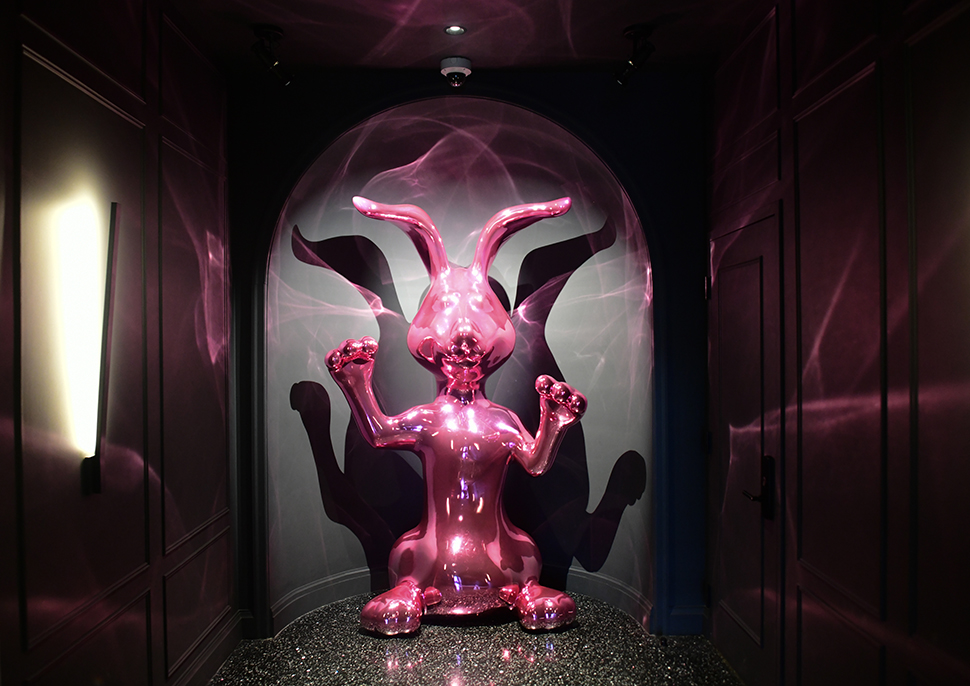
Other pieces are no less stunning. A nine-foot-tall shiny pink bunny rivals the stallion as the hotel’s mascot. Among the hotel’s Saatchi Art-curated collection, Laguna Beach artist Roark Gourley’s metallic rabbit sculpture near the lobby elevators pops up the most on Instagram. A more recent addition strikes a similar chord: a dripping hot-pink butterfly sculpture hatching from a chrysalis by L.A. artist Punk Me Tender.
While these pieces may be the most eye-catching given their proportions and vivid colors, many others are worth a look. One hallway’s arched alcoves frame Italian artist Federico Bebber’s ethereal digital portraits that depict women’s faces transforming into nature like thick, ominous clouds or a leafy forest. And near another elevator, Polish artist Marcin Malewski’s work looks like black computer keys haphazardly placed on a white backdrop. But snap a photo of it with your phone and a mosaic of piercing eyes stares back at you.
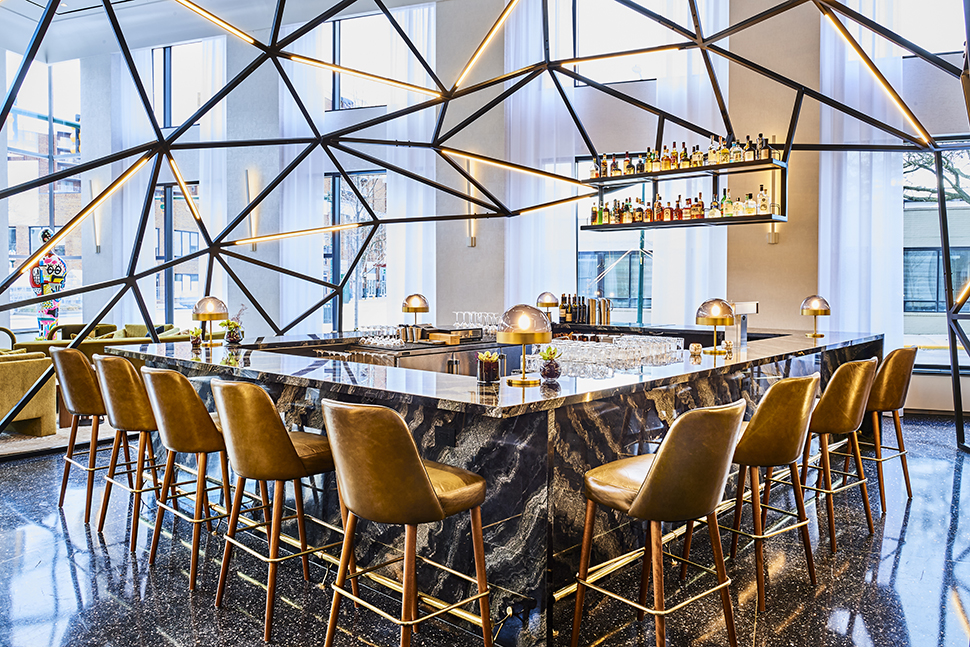
The Dome-Shaped Bar
Upon entering the Forbes Travel Guide Recommended hotel, which debuted in 2021, you notice the geodesic dome encasing the slick black marble bar. It’s a creative way to add a striking visual motif to the lobby bar.
Locals and visitors fill the Geode Bar for the atmosphere and its carefully concocted cocktails from talented beverage curator Cosimo Bruno. His background in science (he holds a chemistry degree) and hospitality (his family owns Manhattan restaurants Caravaggio and Sistina, where he served as director of operations and a sommelier) means he creates precise, well-balanced cocktails with subtle notes of flavors, but Bruno also knows how to connect with guests.
If you can’t manage to snag one of the prime seats lining the bar, he’ll roll out a cocktail trolley to you in the lounge to make the bright, violet-hued Birmingham Bubble (with gin, elderflower liqueur, butterfly pea flower tea, lemon and prosecco garnished with pea shoots and lemon zest); the popular citrus-forward Madam (featuring tequila, Aperol, pineapple, lime, Firewater bitters and an eggless foam) or the Old Fashioned spinoff Subourbon (with bourbon, walnut liqueur, allspice, maraschino cherry syrup and orange bitters).
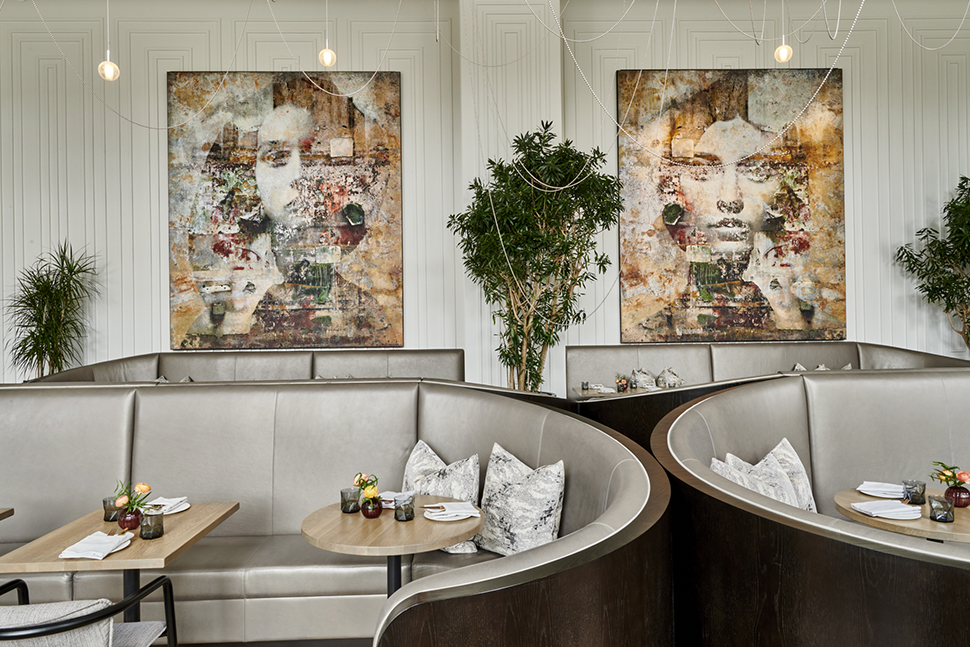
The Art of Dining
In the airy Madam restaurant, you’ll see more geometric shapes — rectangular wainscoting and oversized women portraits from Dutch artist Karin Vermeer on the walls, triangular cutouts in the high ceilings and inlaid wood squares on the floor. But your eyes will be fixed on local chef Clifton Booth’s plates.
Booth, who grew up working at his grandmother’s Lansing café and did a stint at French Laundry, takes a global approach to the menu while working with mostly local ingredients from purveyors like Motor City Seafood. The result is food that is both flavorful and comforting, such as the forbidden rice topped with spicy sausage, plump wild shrimp, chives and a yolk, and the mussels swimming in warming tomato-Pernod broth. These must-order appetizers join delectable entrees like the scallops with heirloom pumpkin, brussels sprouts, bacon powder and apple gastrique, and the succulent filet au poivre with a mushroom marmalade.
Desserts change with the season but snatch up the apple pie if you see it. The individual-sized pie’s white cheddar crust holds local apples, Heaven’s Door bourbon and miso caramel with a scoop of vanilla ice cream on top.
Also keep an eye out for the Art of Dining, quarterly events that feature a multicourse meal inspired by the hotel’s art along with cocktails. The exclusive dinners only have 12 seats, and an artist usually attends to speak about the work.

The Art-Filled Rooms
More art adorns the 151 accommodations, and it’s different in every room. But they all showcase a draped fabric by Detroit-based floral artist Ouizi that serves as a headboard. The scrim’s large colorful blossoms stand out in the predominantly black-and-white interiors. Another design highlight is the bathrooms, with gleaming black marble vanities and white marble showers.
A stay also comes with plenty of perks. Some suites have Dyson hairdryers, standalone tubs and wraparound balconies. And all room categories get 24/7 access to a convenient pantry on their floor that’s stocked with snacks like brownies or croissants, sodas and reading material like the Wall Street Journal. In addition, there’s a gym that offers a Peloton bike, a Lululemon Studio Mirror, Life Fitness equipment and Daxton-logoed sweat and wristbands.
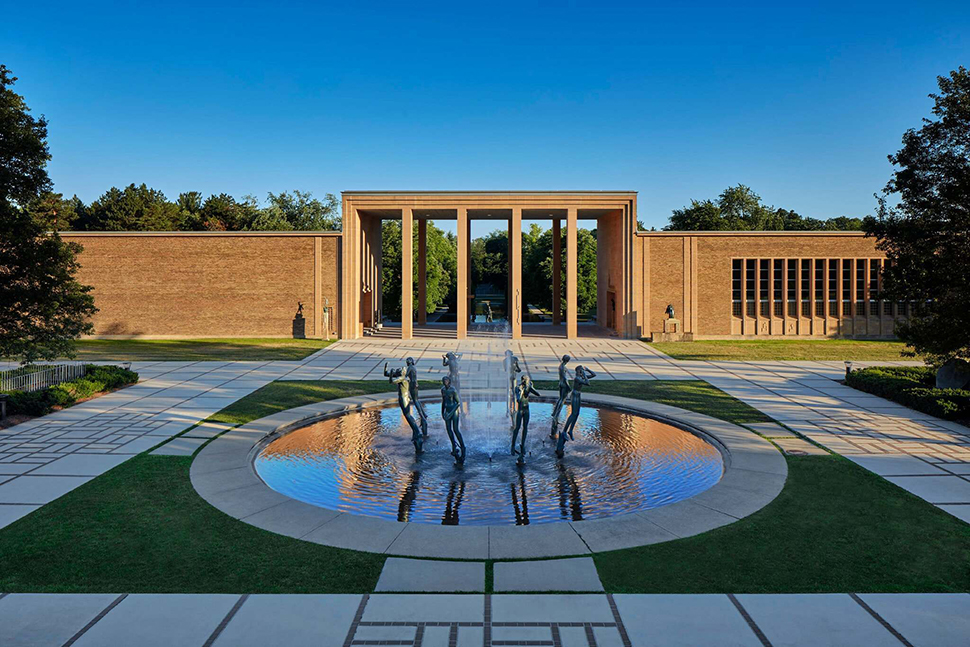
Where to Find More Art
Just four miles from the luxury hotel in Bloomfield Hills lies a hidden art and design hub called Cranbrook, a National Historic Landmark that dates to 1904. It’s no secret to locals — the sprawling campus takes up 319 acres with grade and middle schools, a graduate art academy, a natural history museum and much more.
It’s worth simply strolling the scenic grounds, dotted with lakes, streams, fountains, sculptures and patches of woods. Though you will want to stop into the Cranbrook Art Museum, one of the first in the country to focus on contemporary art and arrange for tours of the must-see historic houses.
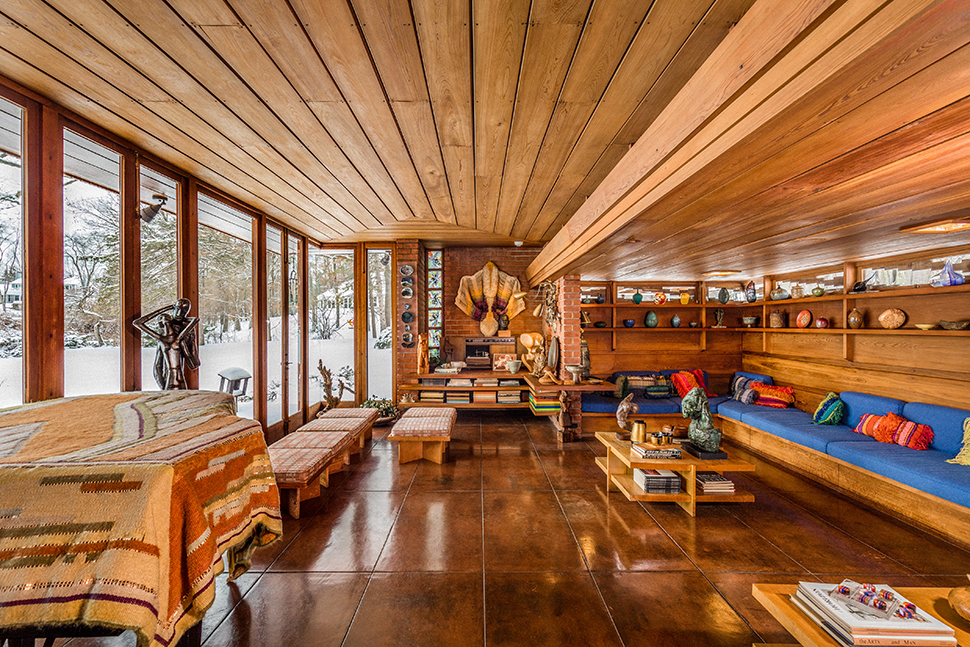
The Frank Lloyd Wright Smith House started as a dream for teachers Sara Stein Smith and Melvyn Maxwell Smith. Despite having modest incomes, the couple strove to commission Wright to design their home and convinced the famed architect to take on the low-budget project. It was part of Wright’s Usonian period, where he created affordable, well-designed dwellings for middle-class Americans.
While small, the house bears Wright’s hallmarks — organic architecture ensconced in nature, walls of windows with mitered glass corners to blend indoors and outdoors, lots of horizontal lines and a flowing open-floor plan that incorporates screens to set off spaces. He also designed the wood tables and seating.
The Saarinen House was designed in 1930 by Finnish architect Eliel Saarinen, whose son Eero went on to design the iconic St. Louis Gateway Arch and John F. Kennedy International Airport’s TWA terminal (now the retro-chic TWA Hotel). The elder Saarinen served as the Cranbrook Academy of Art’s president and lived in the on-campus art deco jewel box of a home with his family until he died in 1950. A standout is what Saarinen called the “Hollywood dining room,” an octagon-shaped space covered with Douglas fir wood and a gold-leaf dome.
